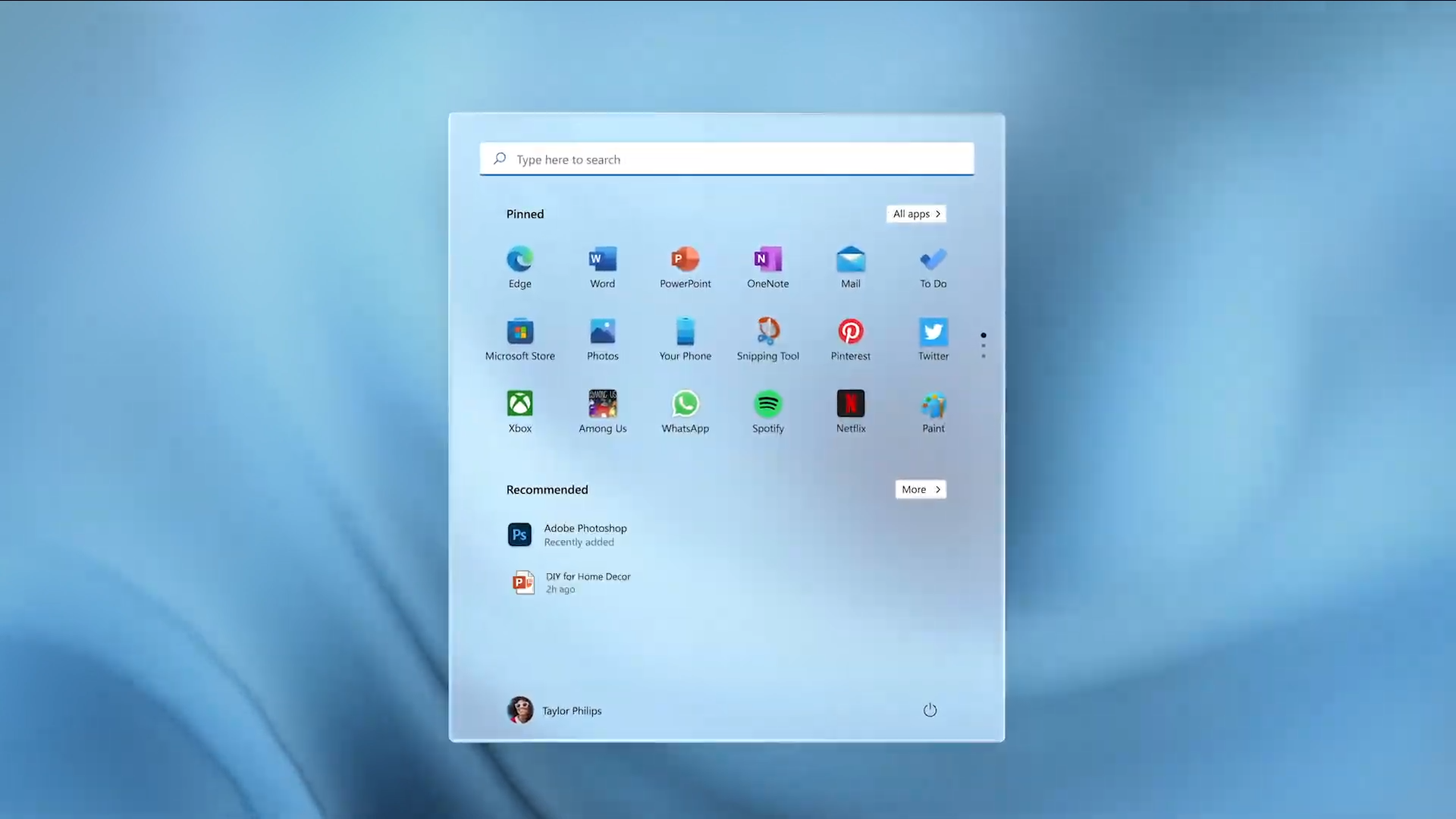Windows 11 Taskbar and Start Menu get a modern remake — Here's how they work
In Windows 11, the Taskbar is now centered and the Start Menu abandons Live TIles

Windows 11 was revealed today with a modernized design. Among the updates is a new Start Menu and Taskbar, two of the most-used elements of the operating system.
Instead of being left-aligned, the new Taskbar features icons centered at the bottom of your screen, not unlike macOS. Among those icons are a Widgets feature and Microsoft Teams, which is integrated directly into Windows 11. Pressing on the Start Menu (a modernized blue Microsoft logo) presents a floating window that displays pinned and recommended apps as well as the restart/shut down button. A small icon in the top-right corner takes you to a full app list.

The Start Menu has a pleasant transparency effect that allows the new, more colorful icons to pop. The Start Menu also has rounded corners, a design decision that extends across Windows 11. At the top is a universal search bar for looking through your PC for photos, docs or files.
Beyond the aesthetics, Microsoft is using the cloud to ensure the more relevant information surfaces when you open the Start Menu.
"Start utilizes the power of the cloud and Microsoft 365 to show you your recent files no matter what platform or device you were viewing them on earlier, even if it was on an Android or iOS device," Microsoft wrote.
At the top is a universal search bar for looking through your PC for photos, docs or files.
When you switch to tablet mode if you're, say, using a 2-in-1 laptop, the icons in the taskbar will shift, creating more space between them so they're easier to touch even if you have chubby fingers.
Sign up to receive The Snapshot, a free special dispatch from Laptop Mag, in your inbox.
Windows 11 will roll out to eligible Windows 10 PCs and be pre-installed on new laptops and desktops starting this holiday.
Windows 11 news and updates
- Windows 11: Your guide to Microsoft's next Windows OS
- Windows 11 release date — when is Microsoft's new OS arriving?
- Windows 11 revamped the touch keyboard — it now features GIFs, voice typing and more
- Windows 11 new startup sound got leaked — and it sounds like Minecraft music
- Windows 11 Search Bar: What changed and what didn't
- Windows 11 gets revamped UI — see how the design changed from Windows 10
- Windows 11 promises longer battery life for laptops, 40% smaller updates
- Microsoft Teams to be integrated into Windows 11 — What that means
- Windows 11 makes multitasking a breeze — how it works
Phillip Tracy is the assistant managing editor at Laptop Mag where he reviews laptops, phones and other gadgets while covering the latest industry news. After graduating with a journalism degree from the University of Texas at Austin, Phillip became a tech reporter at the Daily Dot. There, he wrote reviews for a range of gadgets and covered everything from social media trends to cybersecurity. Prior to that, he wrote for RCR Wireless News covering 5G and IoT. When he's not tinkering with devices, you can find Phillip playing video games, reading, traveling or watching soccer.

